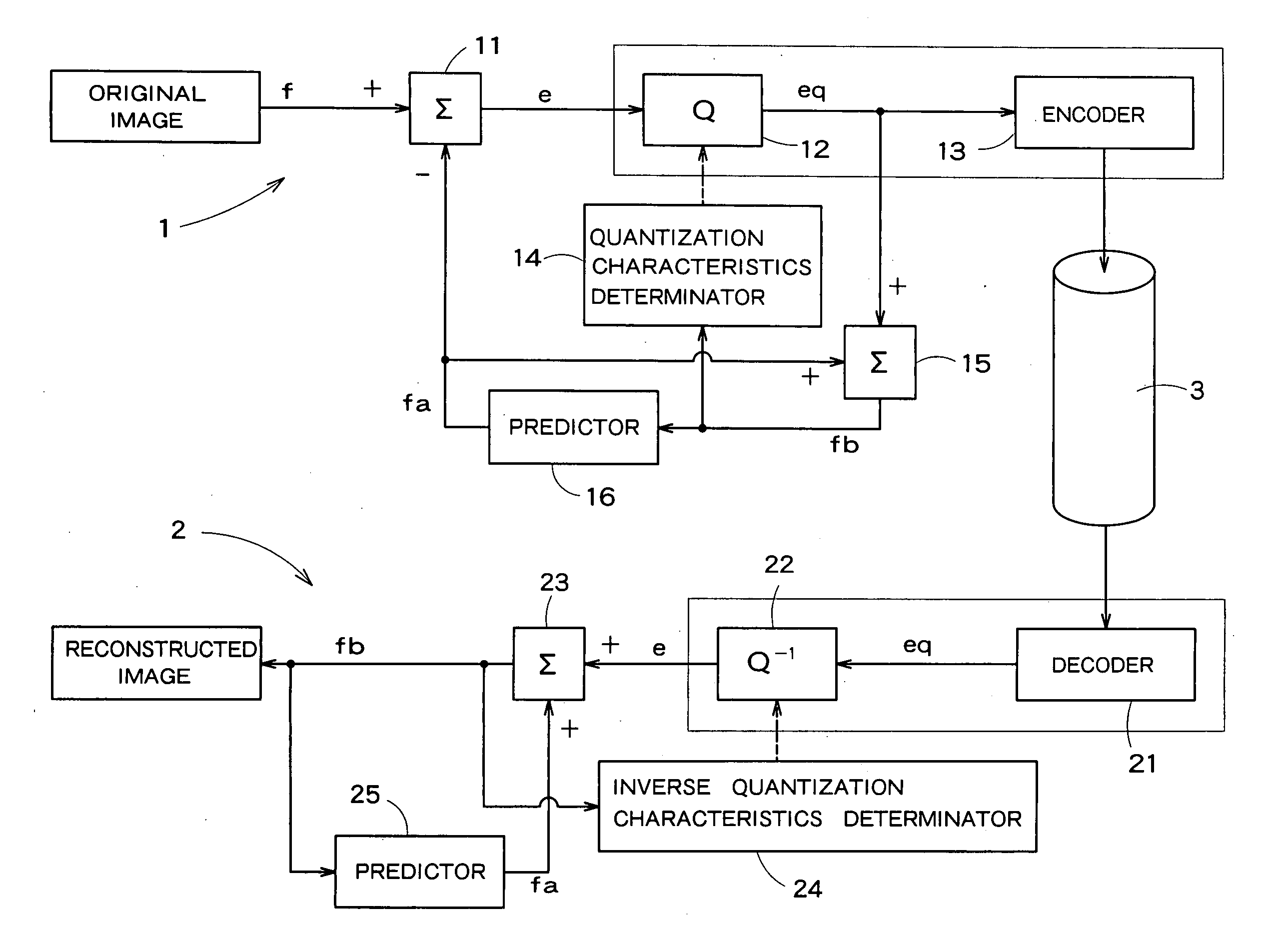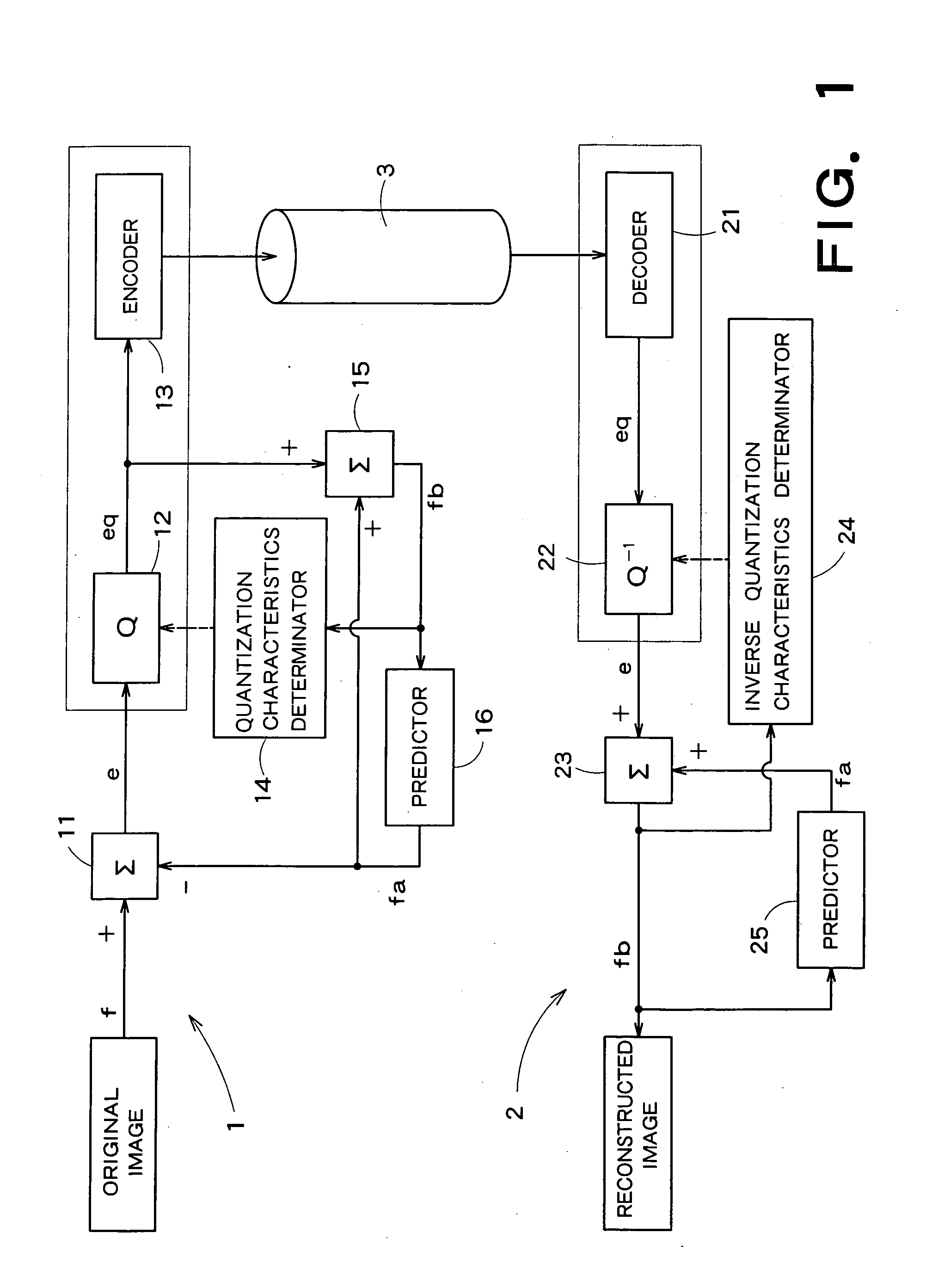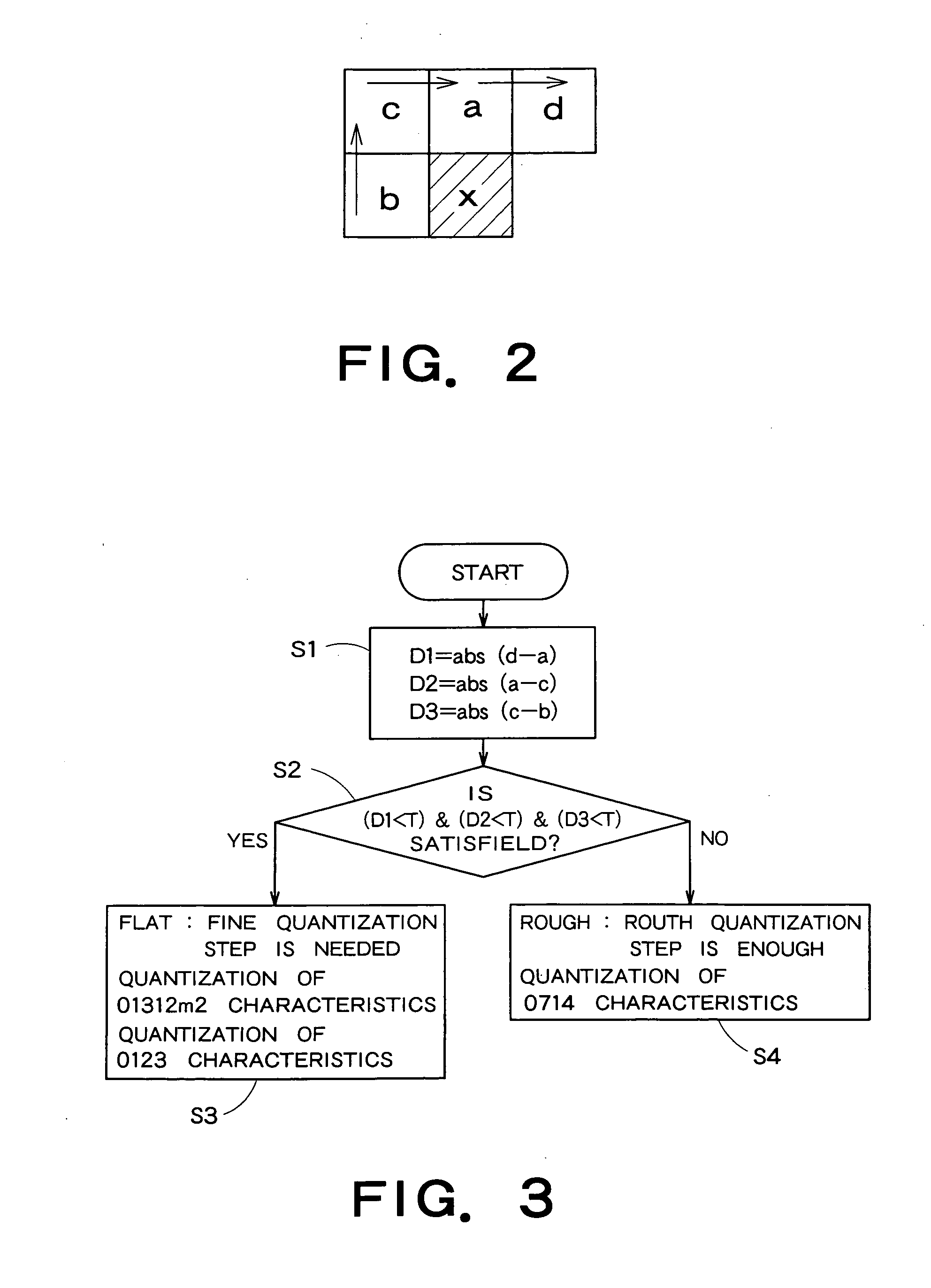Image transmitting apparatus and image receiving apparatus
a technology of image transmitting apparatus and receiving apparatus, which is applied in the direction of instruments, computing, code conversion, etc., can solve the problems of intolerant circuit cost, critical limit of improvement of circuit, and emi problem
- Summary
- Abstract
- Description
- Claims
- Application Information
AI Technical Summary
Problems solved by technology
Method used
Image
Examples
second embodiment
[0140] The second embodiment will furthermore reduce level of multi-valuation for code word than the first embodiment.
[0141]FIG. 13 is an instance of code table. In FIG. 13, the box with bold border marks the code words with average amplitude 0.75. The embodiment will try to remove the code word whose average amplitude is 0.75. In FIG. 13, code words with average amplitude 0.75 are twelve in total count. It includes two 4-valued code words (with coded by using a digit “3”). When average amplitude is same for two code words, a desirable choice is a code word consisting with smaller digits, in order to reduce level of multi-valuation. Therefore, in the embodiment, the 4-valued code words are to be removed. For this removal, although the code word has still larger average amplitude but very less occurrence frequency, thus such partial removal gives no significant affect for image quality as a result.
[0142]FIG. 14 is a modified code table of FIG. 13, where 4-valued code word has been ...
third embodiment
[0153] The third embodiment will treat both transition count and average amplitude when sorting code words in a code table.
[0154] As the embodiment will serially transfer code word Δ3Δ2Δ1Δ0, here, its order becomes meaningful. FIG. 17 is a timing diagram of the data transfer within four cycles. In the case of FIG. 17, image data for two pixels is transferred within four cycles. As shown, image data for R-G, G, and B-G are serially transmitted within four cycles in the similar format, respectively.
[0155] In the case adopting a transfer such as shown in FIG. 17, smaller transition count is preferable for the improvement: the smaller transition count of data becomes, the less power consumption becomes, and the less EMI noise.
[0156]FIG. 18 is a modified code table of FIG. 8 where a new column is added to show transition counts of code word. In FIG. 18, sort the code words with average amplitude in the first priority, and simultaneously sort them with transition count in the second pr...
fourth embodiment
[0159] The fourth embodiment will illustrate a coding by considering only transition count without average amplitude.
[0160]FIG. 19 is an encoding table to minimize the transition count. The column “Code 1” gives code words when the last transferred code word ended in 0, and the column “Code 2” gives code words when the last transferred code word ended in 1. In the both cases, code words are sorted in the ascending order by transition count (with smaller count first).
[0161] The code table in FIG. 19 does not include all possible code word. FIG. 20 shows a list of code words not used in the code table in FIG. 19.
[0162]FIG. 21 shows analyzed results with adding “qQuiet” of FIG. 19 to FIG. 16. For “qQuiet”, the abscissa axis denotes transition count. By comparing with FIG. 16, the curve “cb3” of “qQuiet” is slightly shifted to the left from the curve “cb1” of “qOAC3h”. The values are almost similar: average amplitude is roughly 1 / 17 for MPEG, roughly 1 / 13 for JPEG and roughly ⅕ for T...
PUM
 Login to View More
Login to View More Abstract
Description
Claims
Application Information
 Login to View More
Login to View More - R&D
- Intellectual Property
- Life Sciences
- Materials
- Tech Scout
- Unparalleled Data Quality
- Higher Quality Content
- 60% Fewer Hallucinations
Browse by: Latest US Patents, China's latest patents, Technical Efficacy Thesaurus, Application Domain, Technology Topic, Popular Technical Reports.
© 2025 PatSnap. All rights reserved.Legal|Privacy policy|Modern Slavery Act Transparency Statement|Sitemap|About US| Contact US: help@patsnap.com



